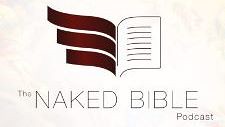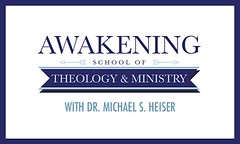 Dan Pritchett of Acid Test Press goes one-on-one with Dr. Michael S. Heiser about his unprecedented testing of the Majestic documents.
Dan Pritchett of Acid Test Press goes one-on-one with Dr. Michael S. Heiser about his unprecedented testing of the Majestic documents.
DP: Well, Mike, the cat’s out of the bag now. It’s amazing that you were able to keep what you were doing under the radar. What gave you the idea to have the Majestic documents tested by a linguist?
HEISER: I got the idea at the X-Conference in 2005—Ryan Wood’s session to be exact—where Ryan had the word “stylometry” on one of his PowerPoint slides. Since I’m a biblical studies scholar, I knew about computational testing on certain biblical books where authorship was in dispute. I also knew that such testing had been done years prior with poor results—the results were heavily criticized in terms of method. I did some research after the X-Conference into the state of the field to see if advances had been made and it looked promising. The idea just percolated for a year as I got distracted by other projects and responsibilities.
DP: What is “stylometry”?
HEISER: In basic terms, it’s the study of a writer’s stylistic features to recognize patterns. Those patterns can in turn be used to determine whether a particular author did or did not write a disputed document. It goes beyond things like idiosyncratic vocabulary to include how a writer uses common vocabulary—conjunctions, prepositions, adverbs, even the word “the”—that sort of thing. It’s easy to study a writer and note unique vocabulary, but it’s quite difficult to master how a writer uses such common functional words. It would be very hard to fake, and in the era during which most of the Majestic documents were written, when people did not have personal computers, it would be impossible. Stylometry also notes patterns in how parts of speech are connected and used—things like subjects, verbs, direct objects—and even punctuation.
DP: How did you find someone qualified to do the testing?
HEISER: It wasn’t that hard, actually. As I read articles on the web about stylometry and what people in the field call “authorship attribution,” one name kept popping up—Carol Chaski. Dr. Chaski had a website devoted to her research and credentials in the field she has personally pioneered, so I found her without much effort. Dr. Chaski has a PhD in linguistics from Brown University, but what I especially liked about her resume was the number of court cases she’s been involved in that have utilized and upheld the results of her work. With something like the Majestic documents, you can’t judge them by the empirical scientific standard of repeatability—but you can establish or invalidate authorship beyond a reasonable doubt using science. I asked her if she was willing to take on the project, and she accepted.
DP: Had she ever been approached before about the Majestic documents?
HEISER: Good question. I didn’t know it when I asked her, but she told me afterward that she had been approached several years ago by the Woods, Robert and Ryan, about having the documents tested. She agreed to do it, but they backed off the idea. When I asked her why, she said they gave no reason. They just sort of abandoned the idea.
DP: Lucky for you!
HEISER: I’d say lucky for the public, actually. People know from my appearances on shows like Coast to Coast AM that I don’t have a dog in this fight. I just want to know if the documents are real or not. I don’t make my living doing UFO research, so I don’t care how it comes out. I just want to make a contribution and hopefully get some answers.
DP: Before leaving the Woods’ work with the Majestic documents, I recall reading that they had some sort of linguistic work done on the documents. Is that true?
HEISER: No. What they are likely alluding to are things like handwriting analysis. Some of the Majestic documents have handwritten notes on them or scribbling in the margins. The Woods have apparently done some sort of work there, but it isn’t clear to me from what they have on their website how scientific that work was or if it yielded any meaningful result. Stanton Friedman has said he gave the documents to a linguist, but there’s no proof that linguist ever did any testing. He more or less said they could or could not be genuine, which isn’t terribly helpful. I think Stanton was encouraged by his comments because he didn’t come out and say what he was looking at was faked. But that’s not scientific—and the linguist in question had his career before computational stylometric analysis was available. It wasn’t his specialty either.
DP: So what were the results of the testing?
HEISER: Well, I really can’t say right now. I promised the person organizing the Roswell UFO Festival that the people at Roswell would be the first to hear the results. I speak there on July 6. I have an upcoming Coast to Coast appearance on the 12th of July where the wider public will get the scoop. All I can say now is that it wasn’t a clean sweep for either side of the debate.
DP: Are you sure? Can you give us a percentage breakdown? What percent turned out to be fakes and what percent didn’t?
HEISER: Nope; sorry!
DP: Maybe you can talk about the ramifications—for both sides?
HEISER: Okay. Since Dr. Chaski's work in authorship attribution has regularly held up in court, I think it’s fair to say that if her tests say a document is written by the person whose name it bears, there's better than a 90% chance it was. Same with the other side.
DP: Well, that doesn’t say a whole lot (laughing).
HEISER: No, it doesn’t (laughing). I guess I should add that the veracity of the UFO phenomenon doesn’t depend on the Majestic documents one way or the other. Even before I had this done researchers in the field of UFO studies expressed skepticism about the documents and still defended an extraterrestrial explanation to the UFO issue. Likewise, just because a document might be authentic also doesn’t mean its contents are true.
DP: How is that?
HEISER: Well, you can have an authentic document that expresses the opinion of a specific writer. Many of the Majestic documents are filled with speculation on the part of the writer—things like “we think this or that about flying saucers”—but opinion, even if held by an important person, is not scientific reality. Writers interpret data and we have to in turn interpret their interpretations. Certain documents, if they were authentic, might add weight to an extraterrestrial hypothesis for the UFO phenomenon, but they wouldn’t prove it.
DP: How can readers get the results of your research if they can’t get to the Roswell festival?
HEISER: Well, they can go to my website and pre-order the report on the Majestic testing. The report is already written, but I won’t send the report to anyone until after the announcement. The report goes on sale June 28 at a deep discount. I’m selling it online to raise money for more testing. Right now the testing focused on documents that have a named author. More sophisticated testing can be done on those, but can also be used to get at the truth behind documents that have no author name. It isn’t cheap, either. People can order the report right now for about half of what it will cost in the future after the announcement. If enough people are interested in getting to the truth, the research will continue. If not, I’ll move on to other things.
DP: Like the sequel to The Façade?
HEISER: Yeah—that can finally get the attention it deserves.
Sunday, July 15, 2007
One-On-One With Dr. Michael S. Heiser: The Majestic Documents
Posted by
Steve McHenry
at
1:25 PM
![]()
Labels: Blog, Coast To Coast AM, Extraterrestrial, Michael Heiser, MJ-12, Roswell, UFO
Subscribe to:
Post Comments (Atom)

































No comments:
Post a Comment